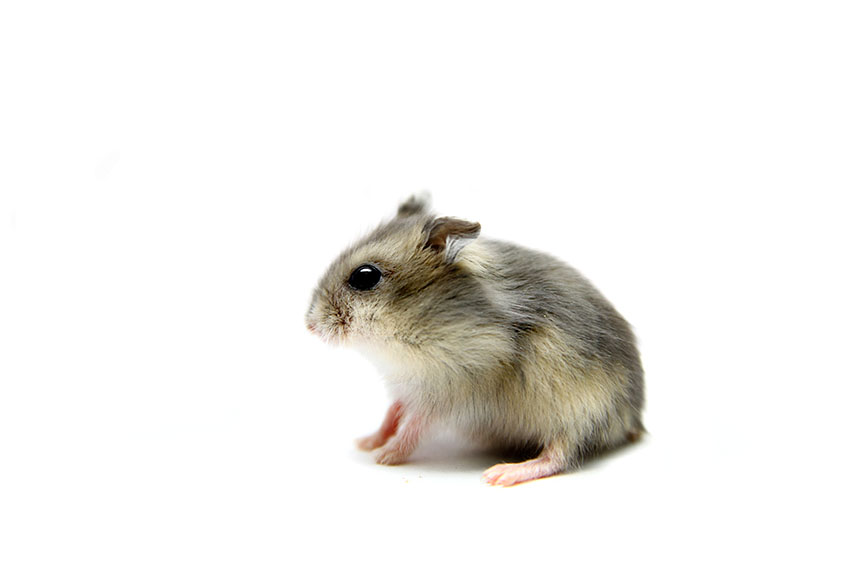As well as keeping an eye on your pet’s health on a day-to-day basis (by noticing out of ordinary behaviour and obvious health problems) it’s a good idea to give your hamster a thorough health check once a week. Below we’ve listed some of the steps that you could use to help check that your pet is in good shape.
- Check your hamster’s hair
Is your hamster’s hair in good condition, or are there bald patches? Does your hamster scratch a lot? Is there a lot of black or dark-coloured material in your hamster’s hair? Your hamster could be suffering from problems such as an injury, an infection or a parasite. Have a look at our ‘Hamster Illnesses’ section for more information.

The condition of your hamster's hair can indicate a number of different health issues
- Check your hamster’s skin and nose
Is your hamster’s skin free of cuts and scrapes? Does your hamster have any dry skin, or crusty patches? Does your hamster have any lumps, any red or swollen areas? Examining your hamster’s skin can tell you if it’s suffering from parasites, from itchy dry skin, bar rub, and from a tumour or infection.
- Check your hamster’s eyes
Do your hamster’s eyes open properly? Is one of them protruding from the head? Are they covered with crust or discharge? Is there anything in their eye? Does your hamster have cataracts (grey areas in the eye)? Are they watery or giving lots of discharge?

Healthy eyes are clear and bright
- Check your hamster’s behind
Checking your hamster’s bottom can tell you a lot about a hamster’s health. Discharge, blood, faecal matter, or moisture could all be indicative of health problems such as infected wombs, bowel problems, and wet tail.
Hamsters, particularly Syrian hamsters, can be affected by the disease known as wet tail. This is a particularly painful condition which can often be fatal. It’s wise to check your hamster regularly for signs of this condition, so that you can get them veterinary attention as quickly as possible. Symptoms of wet tail include diarrhoea, a strange posture, and loss of weight. If you suspect that your hamster has wet tail, then it’s really important that you take your pet to the vet as soon as possible.
- Check your hamster’s teeth
Are your hamster’s teeth of a relatively even length to the one next to them? Do they show any signs of chipping or bleeding? Does the area around your hamster’s mouth bleed or does it show any signs of having bled recently? Some of the most common dental problems involve tooth breakages and overgrown teeth. If you think your hamster has a problem with its teeth, then we advise taking your pet to the vet. Serious dental problems can prevent your hamster from eating, which obviously can be life-threatening.
- Check your hamster’s ears
Are your hamster’s ears free of dry flaky skin? Do they have a lot of dark wax in them? Hamster’s ears can suffer from dry skin and ear mites, so it’s a good idea to keep an eye on them.
- Check your hamster’s nails
Are your hamster’s nails a good length? If they become overgrown, then they can start growing back towards your pet’s foot, and if left too long, they cause your pet a lot of discomfort. If you need more information on trimming your pet’s nails, then have a look at our ‘How To Trim My Hamster’s Nails’ page.

Comments
There are no comments just yet